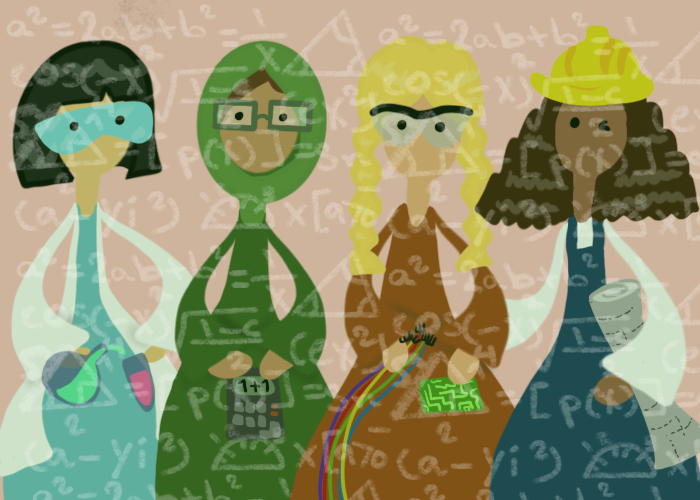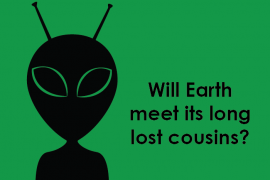There is a greater correlation between educating girls and the world’s stance against climate change than you would think.

If you were asked to name an effective method of standing up to climate change, what would your answer be? The use of electric vehicles could be an answer, and to depend on nuclear renewable energy may be another. We cannot deny their importance, but here is a crucial, overlooked method that typically wouldn’t be amongst the choices you reach out for: educate girls.
If you are struggling to find the correlation, the role of women and girls would become more evident when you slightly shift your perspective on our stance against climate change. A few very basic examples of sustainability, in terms of awareness, are natural resource management and population control; now consider that a girl pursuing education is the one more likely to delay childbirth and is more likely to give birth to fewer children. Homi Kharas, Interim Vice President and Director – Global Economy and Development, conducted a study in 2016 that showed that secondary education received by all the women in the world would lead to 2 billion fewer people on the planet by 2050, and up to 5 billion people fewer in 2100 than if current fertility rates persist. Investing in girl’s education and granting them access to family planning and reproductive healthcare would then result in 120 gigatons of carbon dioxide reduced by 2050, compared to the 90 gigatons that would be reduced by the control of refrigerants that are harmful to the environment, such as chlorofluorocarbons (CFCs), (Kwauk and Winthrop, 2017).
The subject of population control can sometimes raise ethical concerns. While sustaining the human race is a necessity, the globe is inching towards overpopulation. Trends show that by 2030, 97% of the population increase would be in developing countries. But demographers have found that there is a fundamental connection between the empowerment of women and smaller, more sustainable families. Considering that sustainable population can be realized if the women in developing countries who want to avoid pregnancy but do not have the means to, currently around 225 million women, forms a strong counterargument to ethical issues with population control (Kwauk and Winthrop, 2017). Generally, the approach taken must be from a gender justice point of view, and one that is rights-based and delivered through education and awareness, rather than mandated laws against reproduction (Braga and Kwauk, 2017).
To put things further into perspective, we can look at Project Drawdown. Project Drawdown is a coalition of researchers and scientists who initiated a multidisciplinary effort to rank the most effective ways to resist climate change and to cause an annual decline in the concentration of greenhouse gases in our atmosphere (and hence the name, “Drawdown”). Their analysis resulted in 80 immediate measures, and 20 near-future concepts ranked into a list of the 100 most powerful solution to reverse global warming. In that ranking, solar farms sit at #8, and electric vehicles at #26, bioplastics at #47 and nuclear energy at #20. Educating girls is at #6.
Studies also show that female leaders tend to consider and pursue conservation, protection, and sustainability significantly more frequently and effectively (Braga and Kwauk, 2017). A female leader on any scale becomes a fundamental pillar in supporting other girls, and equipping future generations with the awareness and commitment to combat climate change. So, no matter your gender, consider supporting initiatives that are inclusive of girls, that aim to develop girls’ green economy skills, or those that encourage girls’ involvement in science and technology. Maybe one day, you would see climate change declining due to the knowledge of a girl you helped educate.
Bibliography:
Basij-Rasikh, S. (2018, October 09). Want to fight climate change? Educate a girl. Retrieved October 9th, 2018, from https://ideas.ted.com/want-to-fight-climate-change-educate-a-girl/
Braga, A. & Kwauk,C. (2017, September 27). 3 ways to link girls’ education actors to climate action. Retrieved October 9th, 2018 https://www.brookings.edu/blog/education-plus-development/2017/09/27/3-ways-to-link-girls-education-actors-to-climate-action/?utm_medium=social& utm_source=facebook&
utm_campaign=global
Kharas, H. (2016, February 16). Climate change, fertility and girls’ education. Retrieved December 13th, 2018 from https://www.brookings.edu/blog/future-development/2016/02/16/climate-change-fertility-and-girls-education/
Kwauk. & Winthrop, R. (2017, June 2). Concerned about the Paris Agreement? There’s still hope through girl’s education. Retrieved December 13th, 2018 from https://www.brookings.edu/blog/education-plus-development/2017/06/02/concerned-about-the-paris-agreement-theres-still-hope-through-girls-education/
Project Drawdown (2018). 100 Solutions to reverse Warming. Retrieved Oct 9th, 2018 from https://www.drawdown.org/



